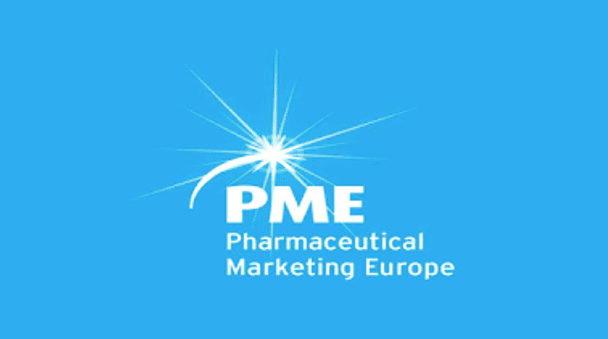Novasecta, was recently quoted extensively in an article in Pharmaceutical Market Europe discussing the advantages of being a family- or foundation-controlled pharmaceutical company. Historically a strong focus area, Novasecta has seen first-hand how family- aednd foundation-controlled companies can leverage their unique position by focusing on long-term strategies that often translate into success. The article can be read here, or below:
The austere black and white portrait photos radiate a stability seemingly at odds with a deal-making era crackling with the electrical charge of take-overs, huge share bids and speculation.
Frozen in an age where a myriad of street pharmacies pushed the frontiers of medicine, the starch-collared chemists could be viewed as a simple footnote in history, outrun by the pulsing pace of modern pharma.
But the principles laid down at the dawn of an industry by a gallery of founding fathers still survive in a group of heritage pharmaceutical companies controlled by governance committees and family members. They have been weathering economic and geo-political turmoil for generations.
While industry wrestles with the fission sparked by the $420bn worth of mergers and acquisitions over the last three years, these high-functioning firms – characterised by private, self-generating capital and heritage trading principles – are free from the jeopardy of shareholder calls and avaricious prompts from investment banks.
But they are far from living life in the pharma slow lane.
Many are prospering across Europe with their trademark long-term view and an agility that would surprise many diverted by events in the headline-grabbing M&A arena.
“There are family held and foundation firms that are successful billion dollar companies but are not beholden to shareholders and the stock market because they are run by a governance committee,” says Novasecta. “Their approach is very different from big pharma as they aren’t distracted by quarterly earnings calls and full year results which allows them to place quite big bets that may or not pay off in the short term. They are in it for the long term.
“They can operate slightly under the radar whereas if someone like Pfizer spends £50m it gets pawed over by analysts and shareholders and everyone second-guesses if it is a good or bad idea.”
Strong inheritance
European pharma has a number of family-run or foundation firms that stick to single condition areas, using generations of knowledge to drive innovation. They include Novo Nordisk, Chiesi, Esteve and dermatology experts LEO Pharma. Founded in 1908 as a pharmacy in Copenhagen by August Kongsted and Anton Antons, LEO now employs 5,000 staff and offers treatment solutions to people with skin diseases in more than 100 countries.
“The main objective for me and everyone in LEO is to pass on a company that is even stronger that what we inherited,” says Gitte Aabo, president and CEO of LEO Pharma. “We are constantly striving to help more patients and help them better. That is the main driver for everything we do.
“Our guiding principles of trust and integrity come from 1908 when pharmaceuticals were made at local pharmacies and could deviate from one to another in terms of safety and efficacy. Our founders believed that when people are sick they must be able to trust their treatments and what they deliver without side effects. That is still ingrained in us.”
LEO Pharma, like many unlisted companies, can plough R&D and target selection at its own pace but financial husbandry is critical as it cannot go looking for top-up funds or angel investors.
Self-financing
“It does limit us to some extent and, in a world where there are many unmet needs in terms of people living with skin diseases, we have an obligation to evolve rather than just protect what we have achieved,” adds Aabo.
“Being self-financing is a challenge and puts a certain limit on how fast we can grow and expand the company. We strongly value partnerships but there is a limit because we need to provide the money for that ourselves. In recent years we have expanded a lot and become a global company but opening in a new market, where you are less well known and cannot offer share options, can make it a little harder to attract the right people which is a frustration.
“But it also strengthens us because we have an ownership structure that means we can take a longer-term perspective than if we were on the stock exchange. It gives us freedom.
“We can stay in markets where other companies might tend to pull out. We have the view that if there are people there who need our treatments then we want to be there even if the economic development may be negative for a few years. We have applied that principle to our presence in the Middle East where we have been for 50 years and have built up a strong standing.
“We entered the Russian market a few years ago and the economics, driven by factors such as decreasing oil prices, worked against us but we stayed because we believe in the market and can use a different lens than if we were just focusing on short-term performance.
LEO Pharma is just an example but that steely gaze has helped other companies such as Novo Nordisk, Chiesi and Esteve carve productive channels rather than stretching themselves across unchartered landscapes.
Gold rush
Novasecta also believes that serial acquisition is not always a Holy Grail. “Companies like M&A business because it can act as a short-term fix,” adds Corbett. “They have a pipeline; they have some cash and some investment bankers knocking on the door saying ‘you should be buying a company or a business unit’. But a lot of data suggests that it can foster a lack of focus because you then have to integrate two new businesses and frequently you have overpaid.
“There is a bit of a gold rush out there, particularly in oncology, even though some of the targets have fairly dubious value propositions. But a foundation company can invest in creating new chemical entities in their field and, if that means revenue drops for a couple of years, so be it. They don’t have to justify themselves to anyone but the foundation board or the family itself.”
Novasecta research showed that the cost of acquisitions doubled in 2016 compared to the previous year, with the median value of the acquisition running at 39 times the value of the bought company, compared to 19 times the value in 2015. A staggering $420bn in large deals was traded between 2014 and 2016, more than double the $170bn recorded for 2009 to 2012.
With political uncertainty across Europe and the world, huge figures and volatility are likely to light up the industry through 2017.
“But there is a lot to be said for going at the same clock speed as it takes to develop a new medicine. This is not Zara pushing out a new clothing line for the autumn and turning a profit the next quarter,” adds Corbett. “Big pharma could learn a lot from the more studious approach of family and foundation firms.”
Caring culture
That view is shared from LEO Pharma’s HQ, just north west of Copenhagen. “I often wonder if sometimes some of what drives M&A generally is the impact on share price and the ability to demonstrate action,” says Aabo, who joined LEO as a financial assistant 25 years ago. “That is not what drives us. Our only measurement is if it will enhance our ability to innovate and provide better treatment to patients, if yes then we will consider it.
“I wonder at the price tags on some partnership acquisitions and how they will be profitable.”
An important factor within the foundation structure is employee engagement, with most recording a low turnover of staff.
“There is a strong sense of purpose that the value we create remains in the company and is invested for the benefit of patients,” adds Aabo. “We want to put the patient at the centre of everything we do and I don’t think you can do that without having a caring culture at the heart of the company. It gives a special trait to the company that is very powerful.”
Research by Copenhagen Business School found that 60% of foundation-owned firms last more than 50 years compared to 10% of comparable companies with different ownership models. Staff retention and board level stability is much more favourable and their capital structure, with lower levels of debt, makes foundation firms less vulnerable to economic crisis.
It is clear the benefits leach into culture as a McKinsey survey of businesses owned by families and founders showed that 90% of board members said that family values were present in the organisation with 70% saying they were part of its day-to-day operations.
The photographs of the founding fathers who started out more than a century ago still have resonance in a world where the eye-watering financials can obscure a sense of purpose and patient focus that underpins most of the industry.



